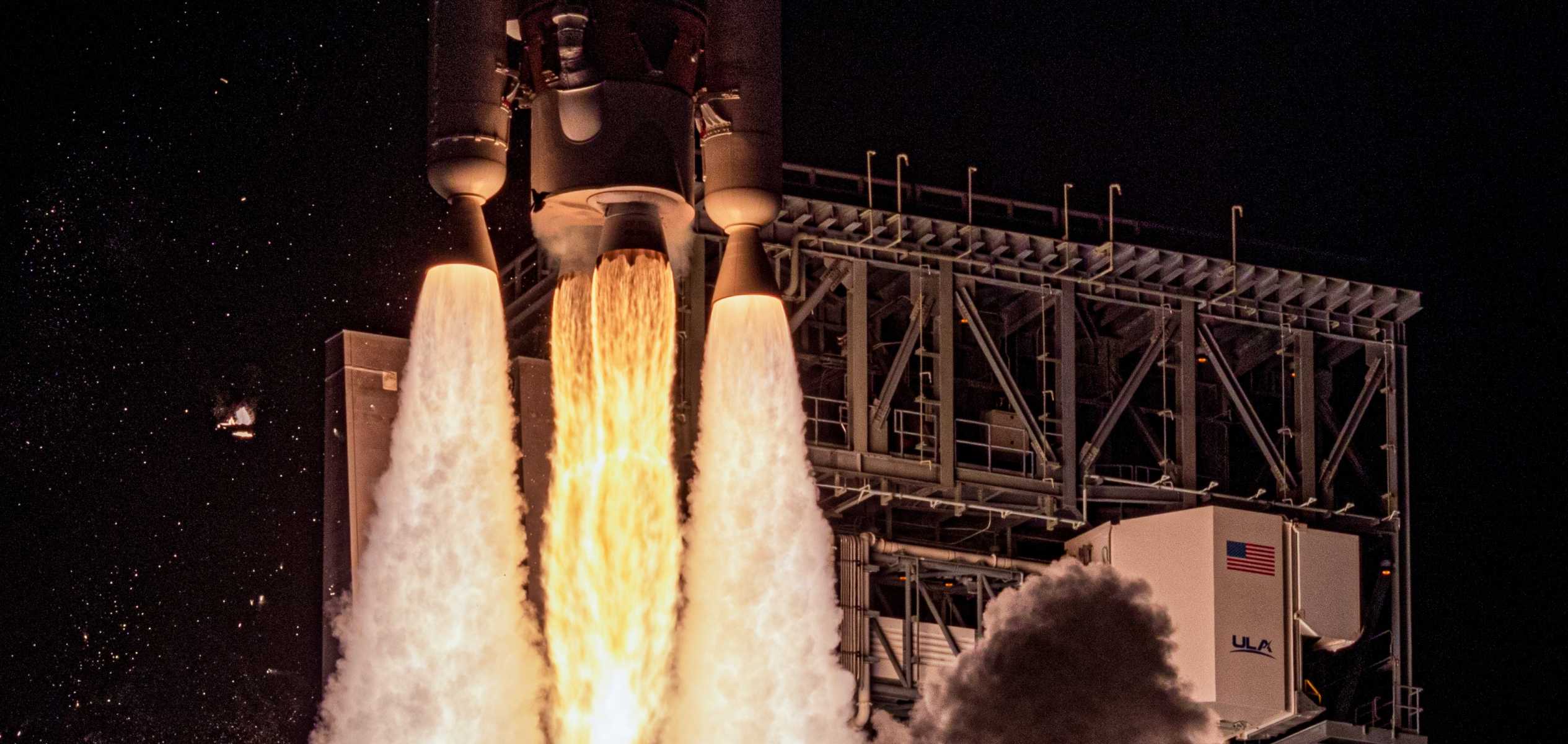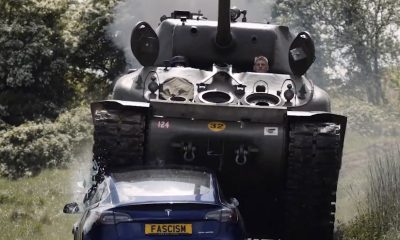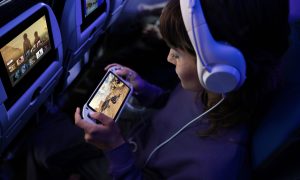

News
Boeing's astronaut capsule flies off course, fate uncertain after launch debut
Roughly 30 minutes after lifting off for the first time on a United Launch Alliance (ULA) Atlas V rocket, Boeing’s Starliner crew capsule suffered a major failure when it attempted to raise its orbit with onboard engines.
A few hours after the failure came to light, NASA and Boeing held a press conference to update members of the media on the situation, with the space agency offering some candid – if a bit odd – insight into Starliner’s anomalous launch debut. Before the spacecraft’s software threw a wrench into the gears, the plan was for Starliner to separate from ULA’s Atlas V Centaur upper stage and use its own thrusters to reach orbit and begin the trek up Earth’s gravity well to the International Space Station (ISS).
While it will likely take weeks or even months for Boeing and NASA to determine exactly what went wrong during the mission, preliminary information has already begun to paint a fairly detailed picture.
Around 15 minutes after liftoff, Starliner separated from the rocket as intended but it appears that things began to go awry almost immediately afterward. Most notably, according to NASA administrator Jim Bridenstine’s tweets and later comments, a very early look at the telemetry suggests that Starliner’s internal clock was somehow tricked into believing that the time was either earlier or later than it actually was.
Thinking that it was in the midst of a lengthy thruster firing meant to raise its orbit and send the spacecraft on its way to the space station, Starliner was thus focused on ensuring that it was pointed as accurately as possible. Although the space station is the size of a football field, in the vastness of space, rendezvousing with it is a bit like threading a needle. While firing thrusters to do so, spacecraft thus need to point themselves as accurately as possible.
While coasting before or after one of those orbit-boosting thruster firings, Starliner thought it was actually burning towards the space station and was thus very carefully controlling its orientation with a dozen or so smaller thrusters. In short, those unintentional thruster firings burned through a ton of Starliner’s limited propellant supply – enough to make it impossible (or nearly so) for the spacecraft to rendezvous and dock the ISS, a central purpose of this particular launch.

This ultimately means that Starliner is leaning heavily on the “test” aspect of this Orbital Flight Test (OFT), uncovering failure modes and bugs that Boeing was clearly unable to tease out with ground testing and simulation. While in a totally different ballpark, SpaceX similar Crew Dragon spacecraft suffered its own major failure earlier this year, although that capsule explosion occurred during intentional ground testing, whereas Starliner’s software failed during its high-profile launch debut and has severely curtailed the scope of the spacecraft’s first orbital flight test.
In fact, Bridenstine was unable to rule out the possibility that Boeing will have to attempt a second uncrewed orbital flight test (OFT) before Starliner will be qualified to launch the space agency’s astronauts. Although early signs suggest that Boeing will still be able to attempt to deorbit and recover the spacecraft a day or two from now, the fact that Starliner will not be able to perform critical demonstrations of its ISS rendezvous and docking capabilities will make it far harder for NASA to rationally certify the spacecraft for astronaut launches.

SpaceX’s Crew Dragon, for reference, completed a more or less flawless launch, orbit raise, and rendezvous before docking with the ISS. It’s almost impossible to imagine NASA giving SpaceX permission to proceed immediately into its first astronaut launch if Crew Dragon had failed to reach the proper orbit or dock with the space station.
Regardless, it’s far too early to tell whether Boeing will have to repeat Starliner’s OFT. If Starliner performs absolutely perfectly between now and its planned soft-landing in New Mexico, there might be a chance that NASA will still allow Boeing to effectively cut corners to its astronaut launch debut, but only time will tell.
Check out Teslarati’s Marketplace! We offer Tesla accessories, including for the Tesla Cybertruck and Tesla Model 3.
Investor's Corner
X clarifies xAI prediction market rumors, hints at future plans
Musk’s AI firm denied rumors of a Kalshi deal but left the door open. Prediction markets + AI could change how we forecast everything.

X dismissed rumors of xAI entering prediction market partnerships. In a recent X post, Elon Musk’s company clarified that xAI had not yet entered formal partnerships in the prediction market.
However, xAI clarification hinted at future exploration in the prediction market, aligning with X’s goal to become an “everything app.” The speculation underscores AI’s potential to reshape predictive analytics.
“Recent speculation about xAI’s involvement in the prediction market space has been circulating. While we’re enthusiastic about the potential of this industry and engaged in various discussions, no formal partnerships have been confirmed to date. Stay tuned!” noted the X team.
X’s statement followed a Tuesday post by Kalshi, hinting at a collaboration with xAI, which was deleted hours later. Kalshi suggested that xAI could leverage AI to analyze X’s news and social media data, enhancing betting decisions on political and economic events.
Bloomberg reported Kalshi aims to use xAI for tailored insights, enabling users to wager on outcomes like Federal Reserve rate changes or elections through derivative contracts.
“There’s deep alignment between prediction markets, social media, and AI. Prediction markets capture what people know — AI scales what people can know,” said Kalshi CEO Tarek Mansour. “This is just the beginning of a long collaboration to unlock the full potential of prediction markets.”
The prediction market industry fits X’s vision to evolve into a comprehensive platform, capitalizing on its trend and news leader role. While xAI’s denial quashes immediate partnership claims, its openness to discussions signals potential interest in prediction markets, where AI could amplify real-time insights.
xAI’s cautious stance reflects its focus on strategic AI development while navigating speculative buzz. As X pursues its “everything app” ambition, prediction markets could enhance its ecosystem, blending social media’s pulse with AI-driven analytics. With no partnerships confirmed, xAI’s future moves may yet redefine how users engage with event-based predictions, positioning it at the forefront of AI innovation.
Elon Musk
Elon Musk sends stern warning to Tesla vandals, doubters
Elon Musk sent another warning to vandals that have attacked Tesla for political reasons.

Elon Musk has sent a stern warning to Tesla vandals, doubters, and attackers, who have subjected the company and its owners to political violence through arson and other modes of retaliation.
Over the past few months, Tesla showrooms and vehicles have been hit with numerous attacks from those who have opposed Musk and his political involvement with the Trump Administration. Although Musk has stepped back from his role within government significantly since the start of May, the company is still looked at as a political target.
While the White House has put a clear-cut line on the acts, calling them domestic terrorism and holding those responsible for the damage they have done, there are still numerous and daily instances of keying cars or worse.
Yesterday, Musk continued to send stern warnings to those who oppose Tesla and choose to handle their distaste for the company with violence and vandalism. In a Bloomberg interview at the Qatar Economic Forum, Musk was asked if he took what has happened to Tesla “over the past few months personally.”
Musk replied simply but sternly: “Yes.”
“Did you take what happened to Tesla over the past few months personally?”
“Yes.” –@elonmusk pic.twitter.com/mNbgkpgZEo
— TESLARATI (@Teslarati) May 20, 2025
He went on to say that not only will those who vandalized the company and its products owned by consumers be held to the fullest extent of the law, but also those who fund it.
Musk also said during a CNBC interview yesterday that very few people buy a company’s products because of the CEO’s political beliefs, and many people do not even know where those CEOs stand on various social issues.
Although Musk has gone out of his way to be transparent about his beliefs, he has a valid point. He obviously felt that, because of his influence, he held a duty to uphold American values and protect what he felt was an attack on free speech and human rights.
Disagreeing with Musk and his political stances is totally reasonable, but damaging products that consumers bought from his companies is not impacting him directly. Instead, it is making consumers’ lives more difficult.
News
Tesla Model 3 gets perfect 5-star Euro NCAP safety rating
Tesla prides itself on producing some of the safest vehicles on the road today.

Tesla prides itself on producing some of the safest vehicles on the road today. Based on recent findings from the Euro NCAP, the 2025 Model 3 sedan continues this tradition, with the vehicle earning a 5-star overall safety rating from the agency.
Standout Safety Features
As could be seen on the Euro NCAP’s official website, the 2025 Model 3 achieved an overall score of 90% for Adult Occupants, 93% for Child Occupants, 89% for Vulnerable Road Users, and 87% for Safety Assist. This rating, as per the Euro NCAP, applies to the Model 3 Rear Wheel Drive, Long Range Rear Wheel Drive, Long Range All Wheel Drive, and Performance All Wheel Drive.
The Euro NCAP highlighted a number of the Model 3’s safety features, such as its Active Hood, which automatically lifts during collisions to mitigate injury risks to vulnerable road users, and Automatic Emergency Braking System, which now detects motorcycles through an upgraded algorithm. The Euro NCAP also mentioned the Model 3’s feature that prevents initial door opening if someone is approaching the vehicle’s blind spot.
Standout Safety Features
In a post on its official Tesla Europe & Middle East account, Tesla noted that the company is also introducing new features that make the Model 3 even safer than it is today. These include functions like head-on collision avoidance and crossing traffic AEB, as well as Child Left Alone Detection, among other safety features.
“We also introduced new features to improve Safety Assist functionality even further – like head-on collision avoidance & crossing traffic AEB – to detect & respond to potential hazards faster, helping avoid accidents in the first place.
“Lastly, we released Child Left Alone Detection – if an unattended child is detected, the vehicle will turn on HVAC & alert caregivers via phone app & the vehicle itself (flashing lights/audible alert). Because we’re using novel in-cabin radar sensing, your Tesla is able to distinguish between adult vs child – reduced annoyance to adults, yet critical safety feature for kids,” Tesla wrote in its post on X.
Below is the Euro NCAP’s safety report on the 2025 Tesla Model 3 sedan.
Euroncap 2025 Tesla Model 3 Datasheet by Simon Alvarez on Scribd
-

 News2 weeks ago
News2 weeks agoTesla Cybertruck Range Extender gets canceled
-

 Elon Musk6 days ago
Elon Musk6 days agoTesla seems to have fixed one of Full Self-Driving’s most annoying features
-

 Lifestyle2 weeks ago
Lifestyle2 weeks agoAnti-Elon Musk group crushes Tesla Model 3 with Sherman tank–with unexpected results
-

 News2 weeks ago
News2 weeks agoStarlink to launch on United Airlines planes by May 15
-

 News2 weeks ago
News2 weeks agoTesla Semi gets new adoptee in latest sighting
-

 News2 weeks ago
News2 weeks agoUS’ base Tesla Model Y has an edge vs Shanghai and Berlin’s entry-level Model Ys
-

 News2 weeks ago
News2 weeks agoTesla Cybertruck owners get amazing year-long freebie
-

 News2 weeks ago
News2 weeks agoSpaceX expands Starlink constellation amid surging global demand




















